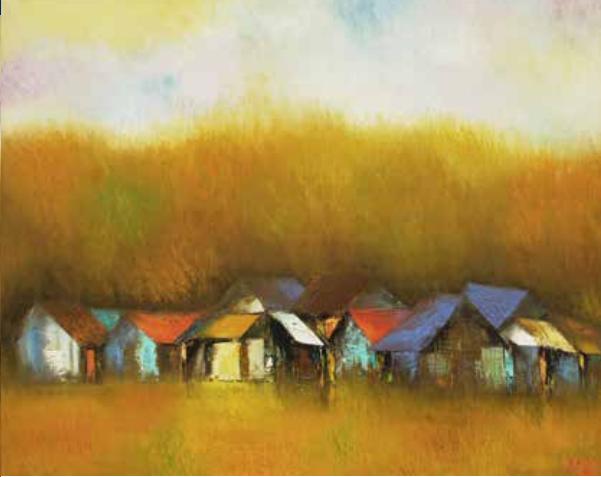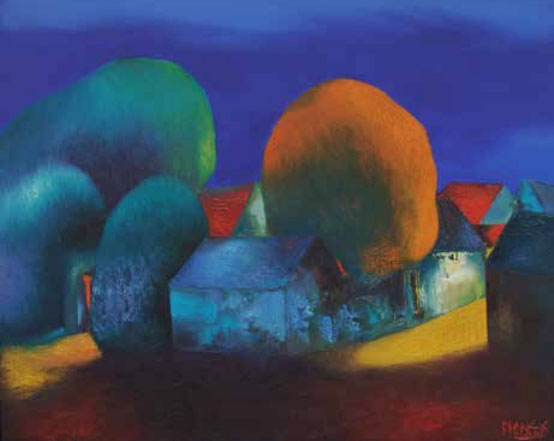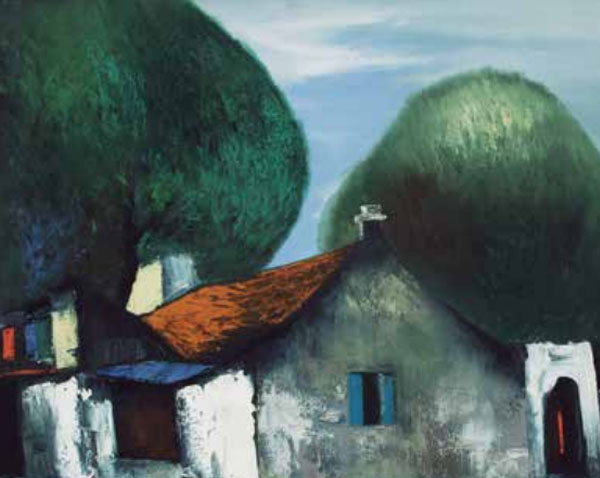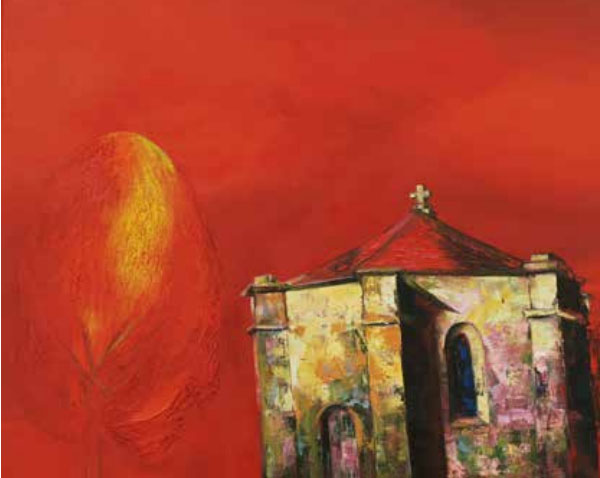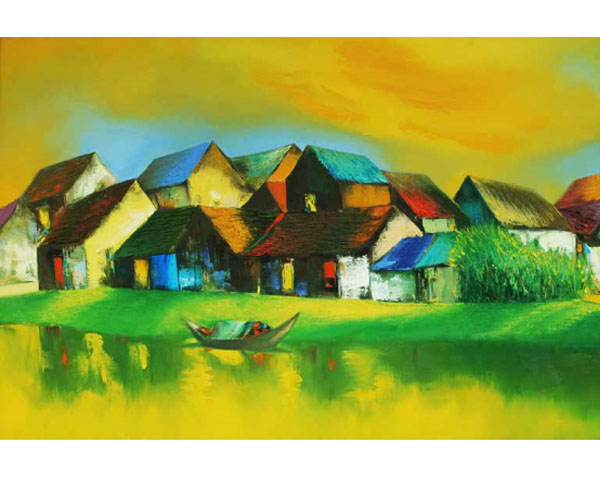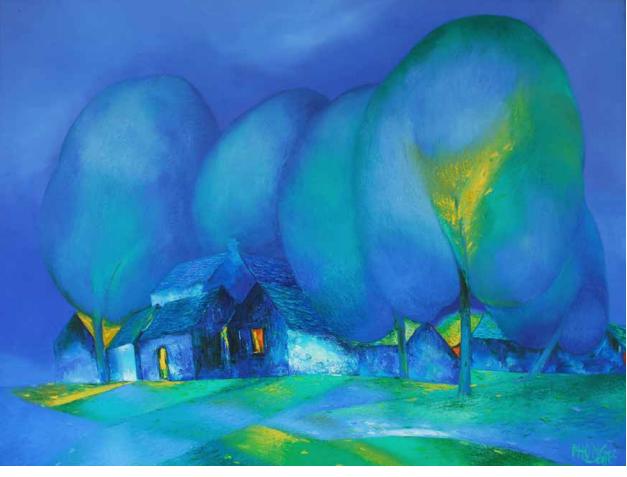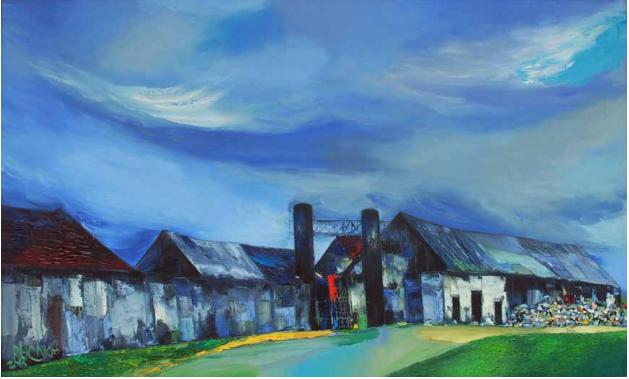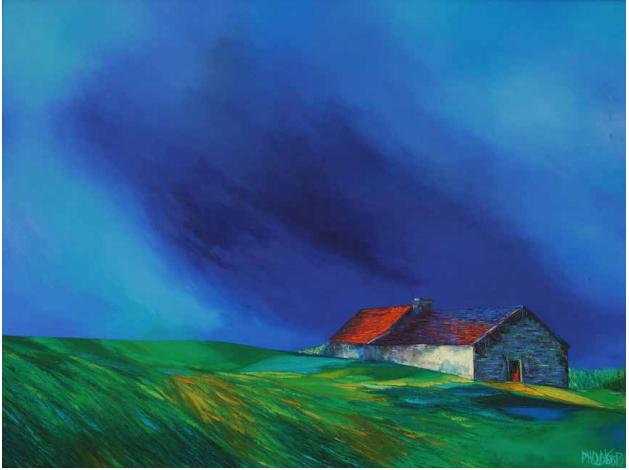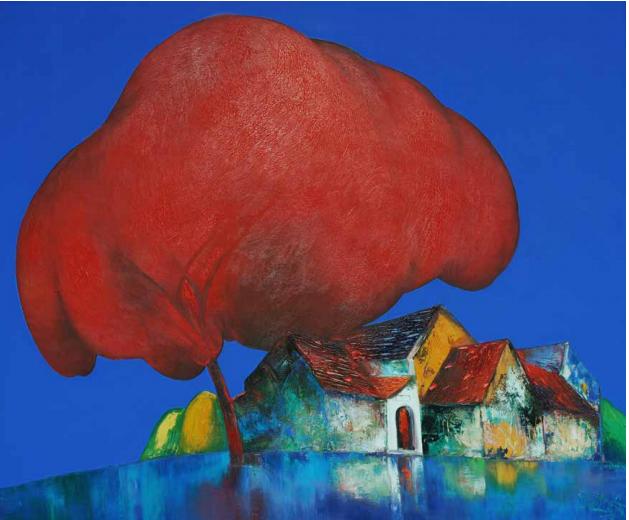VietNamNet Bridge - The art exhibition "Gems of Hanoi – a Dao Hai Phong Retrospective" with oil paintings by well-known painter Dao Hai Phong will be held at Thavibu Gallery in Bangkok, Thailand from January 17 to February 15.
 |
| Artist Dao Hai Phong. |
Regarded as one of Vietnam’s most successful painters that emerged after Doi Moi (Renovation), Phong, 45, has exhibited extensively since 1992 in Vietnam as well as abroad.
"Gems of Hanoi" highlights the art of Phong from the past decade. The exhibition presents a visually seductive selection of 24 paintings as Thavibu Gallery has been fortunate to have been granted access to the artist's personal collection and thus been able to put together a retrospective of some of his best works over the last decade.
Highly regarded for his rendering of villages on the perimeter of Hanoi, his artistic journey has been one of memory and the preservation of a vanishing cultural geography of his youth. His use of glowing colors are reminiscent of sparkling gem stones and the rendering of textures on canvasses are translated into serene and lush vistas that emphasize the true nature of Vietnam. At the same time, the exhibition provides a portrait of what has been dear to him in his background and family.
Phong graduated from the Hanoi College of Art, Film and Theatre in 1987 and has taken part in several international exhibitions in Singapore, Japan, Hong Kong, United Kingdom, Italy, Laos, Switzerland and the USA as well as in Vietnam, and this is his first exhibition in Thailand.
Here is comment by art historian and independent curator Shireen Naziree about Phong's "Gems of Hanoi":
The radiant and glowing colours that permeate and highlight the paintings of Dao Hai Phong speak of a way in which form and brushstrokes determine how colour becomes innate. For Dao Hai Phong, his paintings are not merely a reflection of his inner self, they represent the social logic of life and what has become essen-tial to his personal history. Colour and line embody his character, and his artist’s message is one whereby his depictions of the Hanoi of his youth become an evocative visual journey in which the sparkles of his colours travel from gaze to gaze.
Emulating the success of his father, Dao Duc (b. 1928), the award-winning film maker and director of the first Vietnamese movie ‘Share a River’ (1959), Phong graduated in 1987 from Hanoi Academy of Theatre and Cinema where he studied film in the Art Film Design Department. For the following five years he worked as a set designer, eventually rising to the position of chief designer at the Vietnam Film Studio.
Though Phong did not pursue an aca-demic art education, his talent as an art-ist was visible even as a young boy when his paintings were featured in a children’s book, for which he was paid. Instead he attributes his father as his greatest art mentor and teacher. Ironically, Dao Duc had trained as a painter under To Ngoc Van, the noted artist who was principal at the art academy set up in North Vietnam’s War Zone under the leadership of Ho Chi Minh.
From his travels to the Soviet Union and Poland, Dao Duc would bring back to Hanoi books relating to film and photography as well as art books,
from which Phong learnt the principles of aesthetics and the history of art. It was through these teachings that Phong was able to realize the importance of articulating standards of artistic sense and vision that determined the true value and sincerity of a good artist.
The city of Hanoi where Phong spent his early years was a very different one to the overcrowded modern metropolis it is today. It was a city filled with memories of both happiness and sadness. It was a city filled with a living history and serenity and regarded as the jewel of Indochina.
Dao Duc would take Phong on his bicycle to explore Hanoi’s suburban villages while relating to him the stories of Hans Christian Andersen. For the young Phong, these fairy tales conjured up vivid imaginative spaces that he related to the peaceful Vietnamese countryside. He recalls childhood games amongst topaz-tinged autumn leaves, fascinated by the changing hues from yellows to garnet reds.
The vibrant emerald and peridot greens of summer. The glowing beauty of these colours and the serenity of the countryside would become his lifelong artistic inspiration. From the quiet villages he had visited with his father he realized the sophistication of simplicity, which has provided Phong with a powerful stimulus for creativity.
Vietnam is a country that has never suffered from a lack of artistic sophistication despite decades of tumultuous political upheaval and a modern economic and social history marked by massive change that now defines the nation and particularly Hanoi, yet Phong has created a private world that reflects his inner experiences.
While his paintings are totally Vietnamese in character there are undoubtedly links to the romanticism of the great European Impressionists, in the sense that his work contains a universality and independent humanism with which all cultures can identify.
Phong readily testifies his admiration for some of the great artists of the twentieth century from whose works he learnt valuable lessons.
Phong started painting the villages on the outskirts of Hanoi while still in college, but it was only in 1992 that he had the courage, through much perseverance, to commit to becoming a full-time artist. This was a buoyant period for artists as Vietnam opened up to the international marketplace following its Doi Moi policy in 1986, which also brought artists and their work to the attention of a broader international audience.
This resulted in Phong’s first international showing as a participant in the exhibition The Art of Vietnam in London in 1994.
The symbolic narrative of a serene and ethereal pastoral is part of a poetic repertoire in keeping with this world of past and present fused into a galaxy of gems. Such an attribute does not denote a flight by Phong from reality or a refusal to negotiate the difficulties of war and the suppression of his youth. It is his very independence that has allowed Phong to produce a genre of art that, though conformist, is filled with individualism through the splendour of colour.
Phong employs colours redolent of aquamarine, corals and hues of topaz strung into a quiet village at dawn; the morning light of the quiet countryside serving as an accompaniment to a world of purity. This land of gold and emerald fields, magnified by a glowing palette has continued to inform all his later works.
For the artist, colour has an incandescence that illuminates the canvas. By submitting totally to the visual, he has brought forth the emotional as well as capturing both the brutal radiance of the light and its extreme softness. This is most visual in the painting Myself (2005), where space becomes one of personal experience and solace. He regards such a space as a necessity, untouched by any outside influences for the development of his artistic being. And it is Phong’s hope that each individual who studies his work may find such a space within himself or herself.
As colour arouses emotion, the organization Phong imposes on his landscapes reinforces the symbolic significance of his work. This is despite the motifs; forming part of the history and personal culture of the painter, their effect and meaning is easily understood. Blue Sky (2004) reflects dreams that Phong has pursued, memories of his childhood and his native land with objects of his imagination – such as the voluminous trees – which constitute his iconography.
Trees have had particular significance within his oeuvre as they represent ‘life’ and strength, enduring the ravages of nature and time. In the absence of the figurative, these trees often serve as iconic anchors, their symbolic narrative becoming part of his poetic repertoire, in keeping with his world of a romantic past.
He also imagines that every tree gracing the entrance of a village has its own tale to tell. The prominence of a backdrop of trees to the solitary figure in the foreground in A Ceremonial Village (2005) is a rarity as Phong articulates that trees are representative of the cycle of life. And it is within this cycle of life that he honors the role of the Vietnamese woman, particularly those who toil the fields of rural Vietnam. Season of the Harvest (2005) represents women who harbour dreams for bountiful harvests that ensure the fruitful continuity of life.
At the heart of Phong’s unique world is the past, which he relives through a whirlwind of images and complex fictions despite the apparent simplicity with which they are rendered. He admires Bui Xuan Phai’s depictions of Hanoi, captured with heart and soul and Gentle Street, 2010
resisting the tensions of history. Thus Phong’s versions of Hanoi have become symbols of a paradise lost and perpetually recreated. As much as he has been familiar with the luminous beauty of the countryside, he has been witness, as a son of Hanoi, both to the culture that has given his city its humanism and the changing face of modernization.
Phong has constantly been reminded of this ideology, which has inspired him to create a number of paintings on the picturesque streets of Hanoi and her surrounding villages over the years, from Gentle Street (2002) to The Old Street (2010). Through his paintings, Phong has created a place of recollection and peace that has been accessible to many, initiating dialogues and rekindling memories for his spectators. This he believes is where his aesthetic breaks through its autocracy and gains its freedom to humanity.
For Phong, the beauty of the Vietnamese landscape allows his imagination to wander and, through his paintings, to unite distant dreams. Churches form part of Phong’s familiar language. Whether imposing and grand as in Old Church (2009) or humble as in Red Sunset (2010), he has modulated an artistic language of his own to describe them, paring the excesses of their original French Vietnamese style. The end graphic is an ethereal expression of his divinity and one he hopes that arouses similar feelings in his viewers.
Working chiefly with oils, he paints, scrapes and daubs, creating textures. His recent painterly handling has been more relaxed but remains sensuous as he continues to render his ideas in a spontaneous fashion.
Yellow Sunset (2013) and Blue Fog Season (2013) reveal the increased importance of colour as a medium of expression. In these works, as well as Welcome the Thunderstorm (2013), the colours that light up his skies show an urge to render the overwhelming profusion of light. A calmer quality is revealed in works such as In Winter (2014), though there remains a chromatic harmony of colours. The turquoise and sapphire blues in By the Lake (2010) attest to the power of his expression.
Dao Hai Phong’s work deals with so many personal reflections of his own life that it has the depth to appeal to a large sector of the public. It is a creative diary filled with the sensuous beauty of gemstones. It is from this diary that he draws his inspiration as he merges his dreams with a traditional poem that describes his artistic journey.
Phong's artworks displayed at Thavibu Gallery:
|
The Sacred Lake, 2007
Golden Dawn, 2004
Blue Sky, 2004
Gentle Street, 2002
Red Sunset, 2010
Yellow Sunset, 2013
Blue Fog Season, 2013
A Time to Remember, 2013
A Welcome Thunderstorm, 2013
The Red Tree, 2011 |
T. Van

